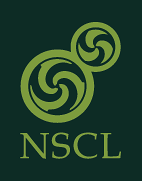NSCL accelerates first beam in ReA6
The National Superconducting Cyclotron Laboratory (NSCL) reached an important milestone on 16 April with first acceleration of beam in the ReAccelerator facility ReA6.
ReA6 is the upgraded ReAccelerator facility at NSCL and the Facility for Rare Isotope Beams. It will provide broader opportunities for nuclear physics experiments with higher beam energies than the previous ReA3.
A nitrogen-14 beam with the charge state of +6 was accelerated to 10.2 MeV/u using the new ReA6 beta=0.085 quarter-wave-resonator cryomodule. The new cryomodule and associated cryogenics and radio frequency systems worked well and operated as expected. The nitrogen beam was delivered to both end stations in the ReA6 experimental area achieving 100 percent transmission through the superconducting linear accelerator and beam-transport lines.
The accelerator optics is capable of providing the beam size as needed by users. A neon-20 beam with a different charge-to-mass ratio was also accelerated and delivered to the end stations achieving 100 percent transmission and similar beam sizes.
This milestone signals that ReA6 will be ready for the NSCL Stand-Alone ReA6 program, which will begin on 12 May.

The energy gain of the nitrogen-14 beam by each cavity of the ReA6 cryomodule is shown, as measured by a silicon detector. R1 represents the first cavity, R8 represents the last cavity of the ReA6 cryomodule.



